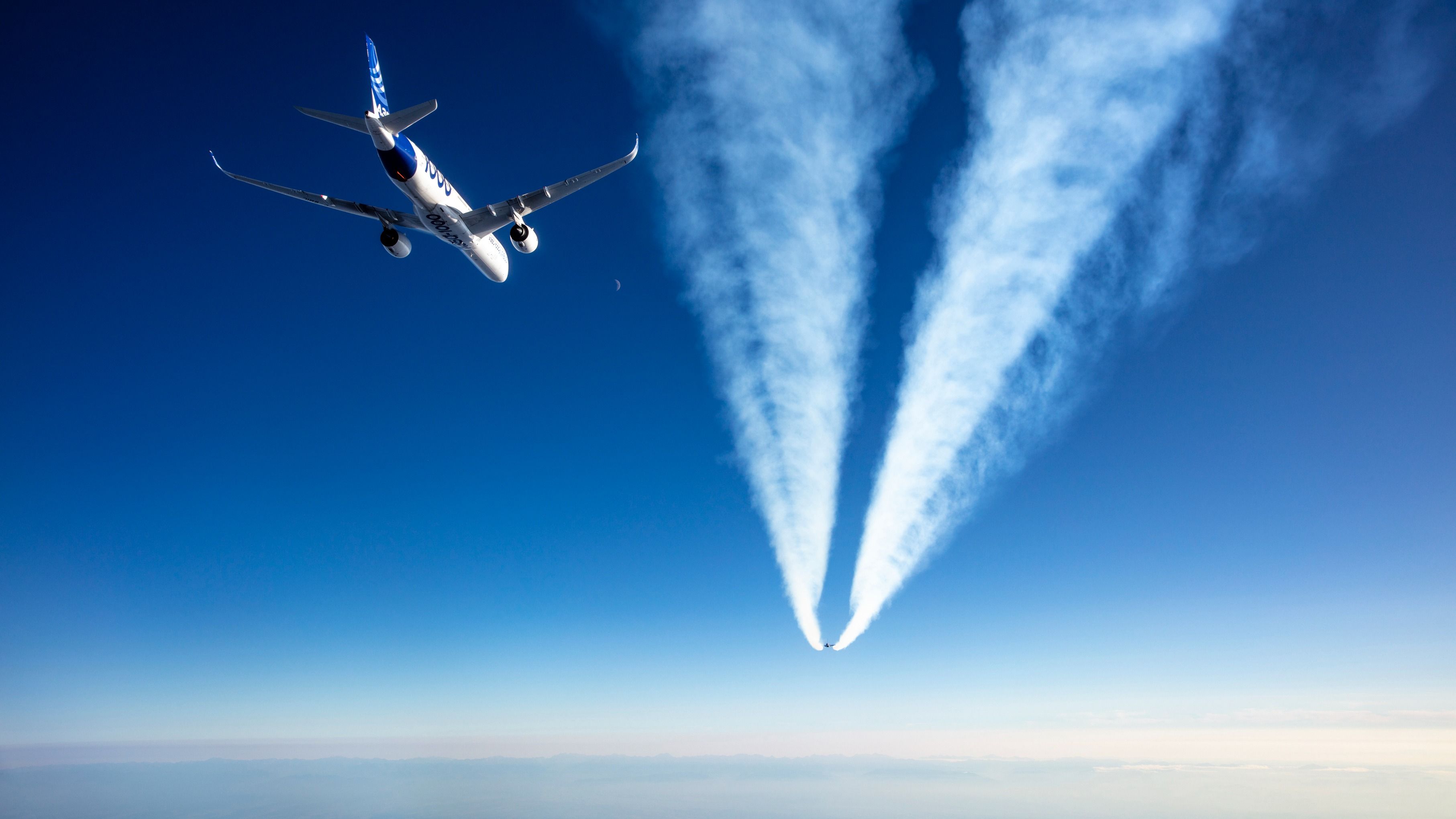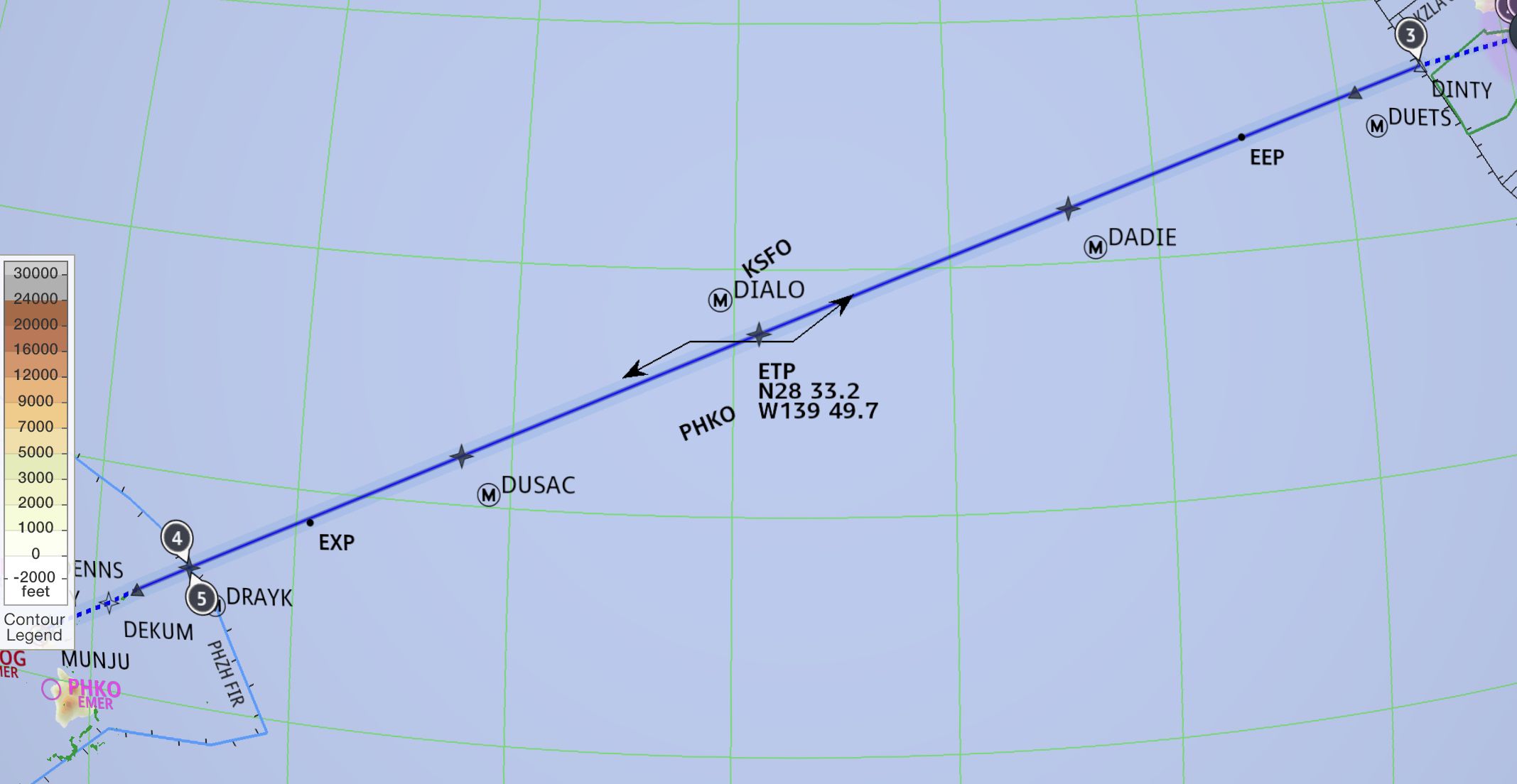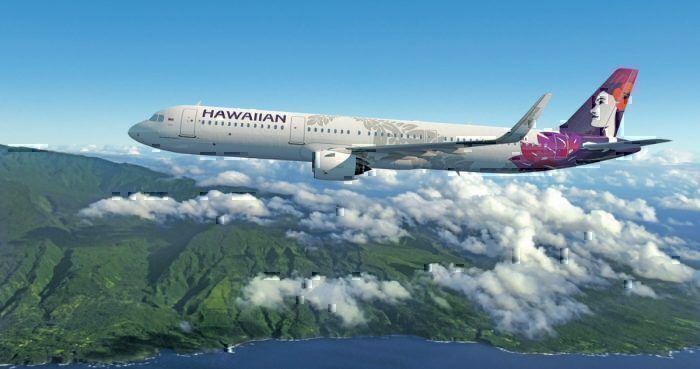Summary
- ETOPS rules allow two-engine planes to fly overwater distances safely, and the Pacific route between the US mainland and Hawaii is notable for its distance from alternate airports.
- Flight plans for the Pacific crossing rely on the Central East Pacific Route System (CEP), which uses pre-coded routes and fixed waypoints for navigation.
- Pilots communicate with Oakland Oceanic Control Center through CPDLC and monitor guard frequencies for weather and turbulence reports during the four-hour radio silence.
The airspace between the US mainland and the Hawaiian Islands is busier than ever. Six passenger airlines and multiple other cargo carriers fly between US mainland cities and various destinations across Hawaii. While most Hawaii-bound flights originate from the West Coast of the US, it’s contemporarily possible to fly to Honolulu from places as far off as Boston, Washington, DC, and Detroit.
With so many flights traversing oceanic airspace, there’s a need for procedures and routing to streamline this operational corridor. Lets take a look at the particularities of flying between the US and Hawaii.
The middle of a giant ocean
Extended-range twin-engine operational performance standards have been the topic of plenty of articles at Simple Flying. Essentially, ETOPS rules allow two-engine planes to fly large distances overwater while complying with high levels of safety and redundancy in the event of an engine failure.
There are countless ETOPS routes worldwide, such as the North Atlantic and Pacific oceanic airspace, but the distance between the mainland US and Hawaii is notable. Principally, the middle of the Pacific Ocean between the mainland and Hawaii is the furthest straight-line distance from a suitable alternate airport. Said differently, the midpoint of a flight off the coast of the US and Hawaii is the furthest a plane can be anywhere on Earth from an alternate airport.
Photo: Airbus
The distance between San Francisco and Honolulu is about 2100 nautical miles, nearly equal to that between San Francisco and Washington, DC. Flying between the mainland and Hawaii is tantamount to flying from the East Coast to the West Coast without a single airport to land at in between.
San Francisco is the nearest large airport to Hawaii on the mainland (yes, it’s even closer than Los Angeles) and is, therefore, almost always designated as the mainland ETOPS alternate in case of a diversion. Remarkably, this means that at the middle of the ocean crossing, the nearest suitable airport for pilots is well over 1,000 nautical miles away.
Calculating the equal time point (ETP) is essential for dispatchers and pilots from multiple perspectives. From the dispatching perspective, they need to plan for the worst-case scenario. If the flight lost cabin pressurization as it approached the ETP, there must be enough fuel onboard to descend to 10,000 feet and either continue to Hawaii or return to San Francisco.
Either scenario presents a flight time of roughly 2:45 (wind dependent), and fuel for this unlikely scenario is always carried. The image below shows a plotted ETP for a flight from Los Angeles to Maui. The ETP has been calculated with San Francisco and Kona as the respective alternates.
Photo: Jack Herstam
Another note on the ETP: It’s never collocated with the exact midpoint between the mainland and Hawaiian alternate airports. The ETP shifts east or west depending on the wind. The ETP is, therefore, always slightly closer to Hawaii because planes fly into a headwind on the westbound journey.
Determining the ETP is a function of time in air rather than straight-line distance. In the improbable scenario that pressurization or an engine is lost just before the ETP, pilots would likely elect to continue straight-ahead since turning at altitude requires a large radius that would increase the ground distance compared to maintaining the course.
Pacific Route System
Let’s focus on how flight plans are constructed for the long Pacific crossing from the mainland to Hawaii. Surprisingly, routes in this airspace are some of the most straightforward worldwide. Dispatchers rely on the Central East Pacific Route System (CEP), a set of pre-coded routes between the West Coast and Honolulu control’s airspace. Unlike the North Atlantic Tracks (NATS), the waypoints that comprise the CEP “tracks” do not change.
The CEP tracks are more like airways, similar to those that traverse continental airspace. Waypoints define each of the airways, and they all start with the same letter on a particular track. For example, airway R464 (part of the CEP system) consists of waypoints named BAART, BARAZ, BILLO, BEKME, BOARD, and BITTA.
Unlike the North Atlantic, where all the tracks are bidirectional, this airway is a one-way route. Therefore, any flight on this westbound route can select any even or odd altitude from 29,000 to 41,000 feet.
Pilots transition from the CEP system to arrivals for their respective airport as a flight approaches the Hawaiian Islands. This happens about 230 nautical miles from landing when pilots establish contact with Honolulu Control.
Oakland Oceanic
Obtaining an oceanic clearance is very straightforward. Pilots simply contact Oakland’s oceanic control center via CPDLC before entering the airspace. Oakland controls a mind-numbingly massive amount of airspace in the Pacific. At its widest, Oakland’s oceanic boundary stretches 6,300 nautical miles from 200 miles off the coast of California to 200 miles from the Philippines. Oakland controls the entire stretch of the Pacific between the US mainland and Hawaii.
Pilot’s contact with Oakland Oceanic is nearly all done through CPDLC (Controller Pilot Data Link Comms), similar to text messaging. Their initial contact with Oakland, requests for speed or altitude changes en route, and the final hand-off to Honolulu Control are all done via CPDLC messaging.
The only time pilots have to talk to anyone while traversing the Pacific is to test their HF radios to obtain a SELCAL check when first entering oceanic airspace. This is a backup to CPDLC and works in the background so pilots don’t have to monitor an active ATC frequency. SELCAL pings pilots if controllers wish to establish voice communications, and the pilots would use their HF radios to talk with controllers in Northern California. If the CPDLC datalink fails, pilots must use this method to make position reports over the waypoints on their CEP route.
During the four-ish hours that pilots are out of radio contact with ATC, they monitor guard frequency (121.5) and frequency 123.45. Pilots use this frequency to talk with one another while in oceanic airspace and get reports about turbulence and weather, among other things. Operating to and from Hawaii is arguably the quietest domestic US flying from a radio perspective since most of the time is spent outside direct voice communications with ATC.
Fly away to paradise!
The route between the US mainland and Hawaii is relatively straightforward. There’s plenty of planning on the front end, but once out over the Pacific there isn’t much to do compared to continental flying. That said, pilots remain vigilant of fuel burn, weather along their flight path, driftdown altitudes, alternate weather, and their position relative to the equal time point, among other things. The route is relatively straightforward compared to other oceanic theaters because it’s purely domestic flying, and only a single clearance is needed.
Photo: Hawaiian Airlines
Aside from all the flying considerations, landing at one of Hawaii’s airports after a journey from the mainland is an experience that doesn’t get old. In this way, a trip to Hawaii breaks the adage that the journey is more profound than arriving at the destination. In this case, the destination is pretty top-notch!




